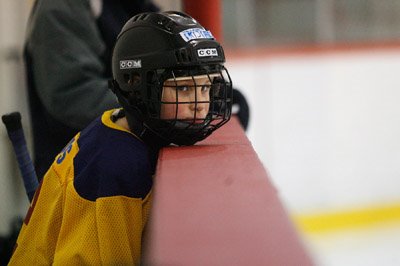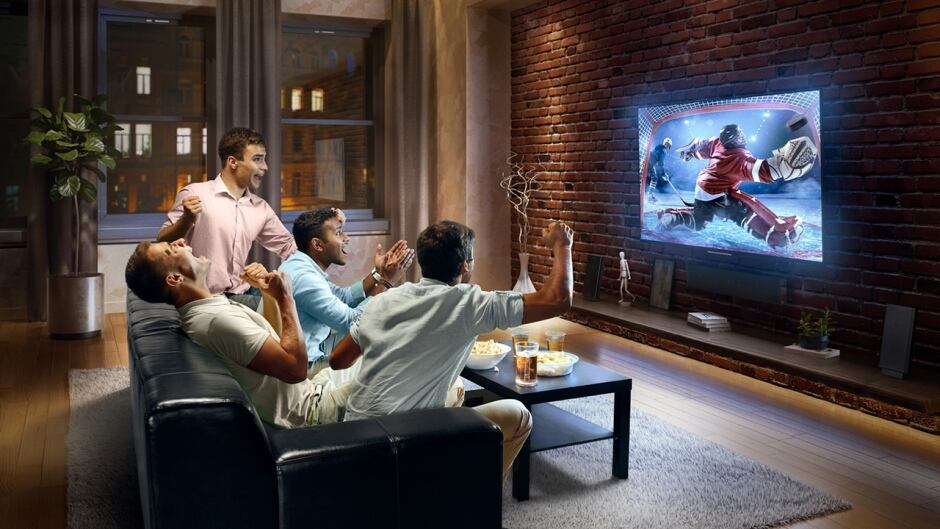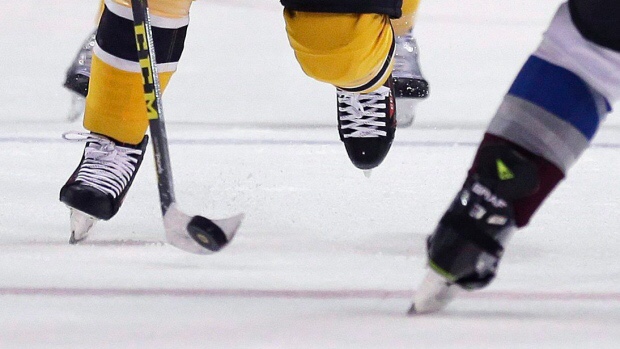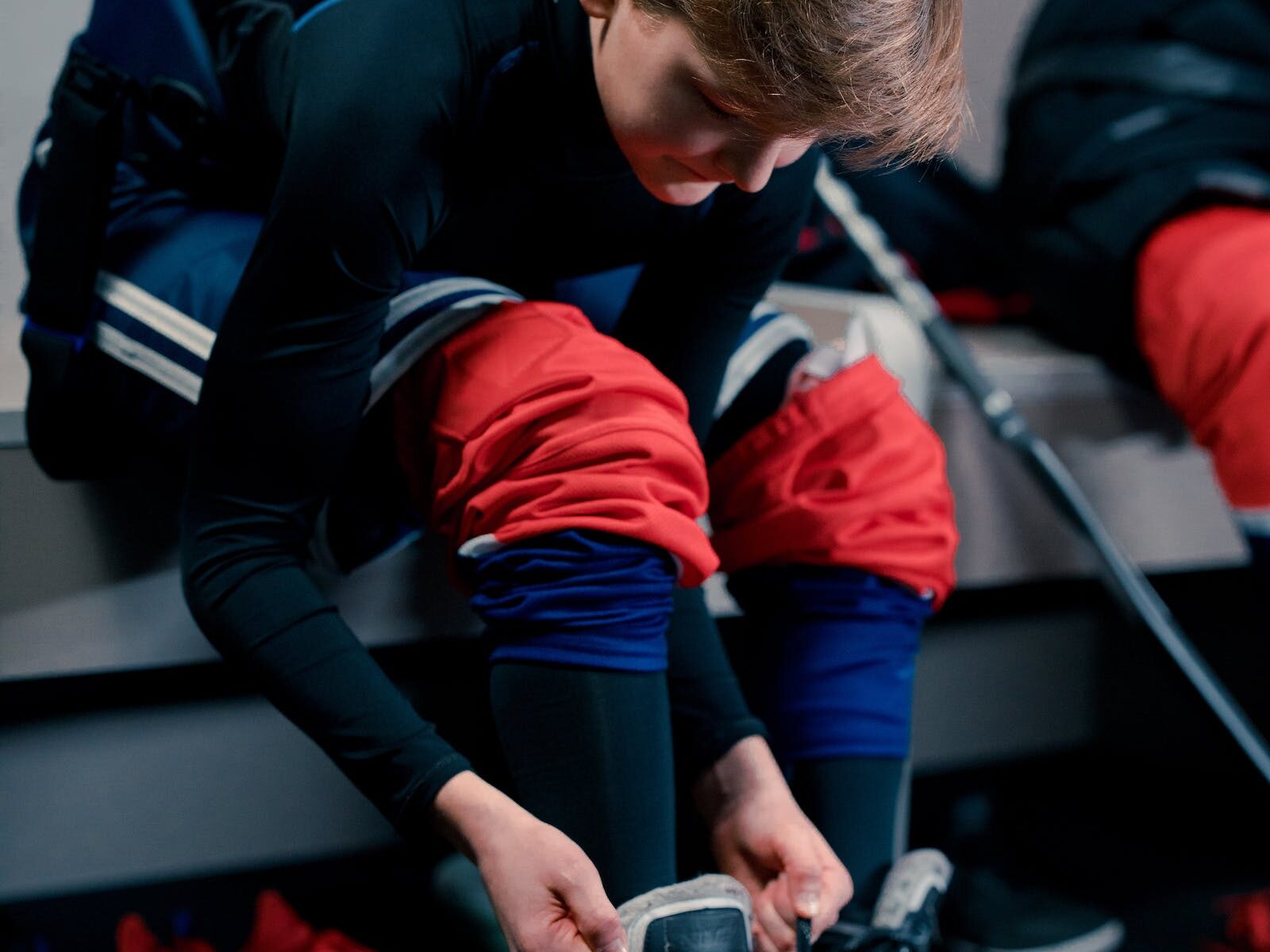Rise and shine, hockey fans! Morning skates are becoming increasingly popular among youth hockey players. With limited ice available to rent, hockey camps are beginning to fill up at the early hour of 7 AM. It may be hard to get up for the morning skates, but the benefits that come with them are worth it. Not only does it give youth athletes the chance to hone their hockey skills, but it also offers a plethora of other benefits that may surprise you. In this blog post, we will discuss the surprising benefits of morning skates for youth hockey players.
Continue reading “Rise and Shine: The Surprising Benefits of Morning Skates for Youth Hockey Players”From Benching to Building: The Evolution of Youth Hockey Coaching
Modern hockey coaching has changed drastically over the years, shifting away from the traditional approach of benching players in order to discipline them. Today, coaches focus more on building a positive environment and developing their players through teaching and support. In this blog post, we’ll explore how youth hockey coaching has evolved from benching to building, and why this shift is essential for the success of young players.
Continue reading “From Benching to Building: The Evolution of Youth Hockey Coaching”From the Ice to the Couch: The Case for Balancing Practice with Hockey Watching Time
Youth hockey players today train and practice hard for games up to 6 days a week. But have we taken the time to balance their hard work with an activity that can help them learn more about the game of hockey? Watching hockey on TV has an overlooked benefit that goes beyond just studying the game. In this blog post, we’ll discuss why it is important to make time for hockey watching and how it can be beneficial for young hockey players.
Continue reading “From the Ice to the Couch: The Case for Balancing Practice with Hockey Watching Time”Are Skills Coaches Making Players More Selfish Than Ever?
The debate between individual vs team, skills coach vs head coach has been a controversial one in the hockey world for years. It seems that many players are leaning more towards individual skills with the help of their skills coaches, leading to some believing that these coaches are making players more selfish than ever before. This begs the question, are skills coaches really making players more selfish than ever? In this blog post, we will explore the relationship between skills coaches and team play to see if there is any truth to this claim.
Continue reading “Are Skills Coaches Making Players More Selfish Than Ever?”Outsmarting the Opponent: The Power of Angling in Hockey
Angling is a powerful technique that can be used in hockey to outsmart the opponent. By angling, hockey players can use their body position, stick positioning, and timing to block their opponents without having to resort to body contact. This technique is especially beneficial for female players since they are not allowed to engage in body contact, but it can also be a powerful tool for male players. With angling, hockey players can use their skills to gain a competitive advantage without needing to rely on physicality.
Continue reading “Outsmarting the Opponent: The Power of Angling in Hockey”Hockey Coaches Embrace ‘Skill Stacking’ for More Effective Player Development
Hockey coaches have begun to utilize a new strategy for player development: Skill Stacking. This approach focuses on breaking down individual skills into smaller, more manageable tasks and then combining them together into one cohesive sequence. It is designed to create a more efficient, effective practice that can help hockey players hone their skills and become more successful on the ice. Skill stacking is quickly becoming the go-to technique among hockey coaches, and it promises to revolutionize the way players are developed.
Continue reading “Hockey Coaches Embrace ‘Skill Stacking’ for More Effective Player Development”The Reality of Youth Sports: Prioritizing Engagement Over Rousing Speeches
As a Hockey Coach at the grassroots level, it can be difficult to get your players to engage in pre-game talks. Despite our best efforts, many of them are more concerned about a birthday party or something else entirely. While it may seem like rousing speeches are necessary to motivate them, the reality is that they’re simply not listening. It’s important to get to the point quickly and keep their attention – otherwise, all that effort is wasted. In this blog post, we’ll discuss why it’s important to prioritize engagement over rousing speeches in youth sports.
Continue reading “The Reality of Youth Sports: Prioritizing Engagement Over Rousing Speeches”Why Praising Ability Won’t Cut It: How to Develop a Growth Mindset in Hockey Players
As a hockey coach, you have an important responsibility to help develop a growth mindset in your players. This means avoiding praising their ability, and instead commending them for their efforts. According to Carol Dweck in her book, Mindset, this is the best way to nurture the growth mindset that can lead to long-term success. As a hockey coach, it is up to you to cultivate an environment where players can learn, improve, and develop both on and off the ice. In this blog post, we will explore why praising ability won’t cut it and how to foster a growth mindset in hockey players.
Continue reading “Why Praising Ability Won’t Cut It: How to Develop a Growth Mindset in Hockey Players”Hockey Dressing Room Dilemmas: When Should Parents Say Goodbye?
As parents of young children, we understand how quickly time passes and how soon our kids are growing into independent adults. One of the most challenging tasks we face is knowing when to step back and allow our children to take the lead in the hockey dressing room. In this blog post, we will provide helpful tips to guide parents on how to best support their young athletes in a hockey dressing room setting and encourage them to flourish.
Continue reading “Hockey Dressing Room Dilemmas: When Should Parents Say Goodbye?”The Art of Accountability: Lessons Learned from a Junior Hockey Kangaroo Court
As an experienced junior hockey player, I learned first-hand the importance of accountability. Every week, we would have a Kangaroo Court which allowed us to hold each other accountable for our actions, both on and off the ice. Through this experience, I gained insight into the art of accountability and want to share these lessons with others. In this blog post, I will explore the valuable lessons I learned from participating in a junior hockey Kangaroo Court.
Continue reading “The Art of Accountability: Lessons Learned from a Junior Hockey Kangaroo Court”









